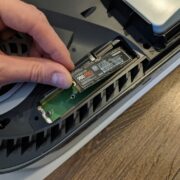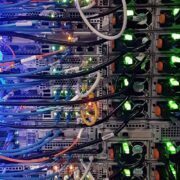Though thermal detection equipment arrived at the workplace relatively suddenly, the sudden emergence of thermal detection devices simply reflects the advantages that thermal detection equipment has over traditional methods of heat detection because thermal detection equipment is a non-destructive device for the identification of overheating issues that represent problems that would manifest themselves in terms of potential hazards such as fire, equipment failure or structural failure.
In electrical systems, machinery, and buildings, the chances to identify problems before they become more complicated have greatly enhanced preventative maintenance and mitigation of risks. This technology has become indispensable in industries where safety is most important to minimize time, the occurrence of accidents, and, often, expensive repairs.
Here’s how it helps;
Table of Contents
Detection of Anomalous Temperature for Electrical System
Another area of thermal detection device application is electrical systems. These devices are very useful in sensing temperature fluctuations, which are a strong indication of problems such as loosened connections, overloaded circuits, or bad components. Electrical origins account for most fire incidents in any working environment, and thermal imaging acts as an early alarm system.
For instance, thermal cameras can monitor electrical panels in a manufacturing plant. When a circuit breaker is too hot, it will appear as a white spot on the thermal picture. This makes correcting any fault easier and preventing a fire before the breaker has gone wrong, if it has one. Routine thermal imaging inspection of electrical systems has reduced workplace accidents by 30% in factories, data processing centers, and other hazardous establishments such as the chemical industry.
Improving Machine Maintenance
In industrial applications, machinery, and equipment are expected to emit a lot of heat as they are used. However, when the components wear out, conduct friction, or fail mechanical features, it can lead to equipment destruction, high rates of production, and danger and risks. Thermal imaging devices enable maintenance crews to keep track of the condition of plant equipment in real-time, analyzing heat signatures to determine areas of potential failure.
In the manufacturing or mining sector, where large machinery is used, thermal imaging reveals problems like misaligned bearings, failing motors, or poor lubrication. These problems can be observed early enough, allowing industries to make preparations for repair or replacement to counter the possibility of complete failures that may lead to injuries or a halt to production. According to several studies, the application of thermal detection devices in effective predictive maintenance of machinery could increase its useful life by between 20% and 30%.
Improving Building Inspections
Thermal detection devices are also very useful in building inspections. They can identify problems in insulation, water seepage, or any defect in a structure that is usually beyond the human realm of vision. If these problems are not resolved, then one can expect energy losses, mold formation, and, in the worst–case scenario, the collapse of a facility.
In commercial or industrial structures, thermal image analysis enables the facility managers to gauge the overall condition of building structures. For instance, finding heat light through the roof or wall suggests that they do not insulate well, a factor that makes them least efficient. Also, thermal cameras can even determine moisture that may be accumulating behind something as it will lead to molding and build-up of molds and mildews that may affect air quality and the workers’ health. Thermal imaging for building inspection in steady intervals is found to lower the structural failure rate by a quarter, making workplaces safer and more efficient in energy consumption.
Fire Hazards and Fire Prevention
Some industries, like oil and gas, chemical processing, and energy generation, are located in areas with a high possibility of fire and explosion. Thermal detection devices are fundamental in these settings because they smolder, including overheated equipment, improper electrical wiring, or hot spots in storage tanks that may lead to a fire.
Thermal cameras are, for example, applied in the oil and gas sector to control pipelines and storage to identify leakage and prevent fires or explosions. In particular, concerning temperature anomalies that indicate leaks, companies can act quickly to avert catastrophes. In dangerous conditions, thermal detection has lowered the number of fire cases by more than forty percent with equal consideration of the safety aspects of the workers and the ecosystem.
Boosting Efficiency in Energy Audits
Energy is a critical factor in production, and companies want to reduce the costs associated with wasted energy. Therefore, thermal detectors are common in energy surveys. To learn more about efficient energy management, visit Meundies for valuable insights. Using thermal imaging, heat leaks, inefficient HVAC systems, or malfunctioning electrical equipment are identified, allowing industries to conserve energy and reduce operational costs while promoting safety.
For instance, a thermal setup in a big company with offices may help determine areas of the windows and doors where heat leaks. The building manager can use this to solve insulation problems and enhance the general efficiency of the structure’s energy. Also, identifying systems that can rack up high energy bills decreases the probability of equipment failure through overheating. The use of thermal imaging during energy audits has seen energy efficiency by most companies increase by 15 to 20 percent, thus increasing cost savings as well as sustainability.
Non-destructive Tests in Hazardous Zones
Thermal detection devices are most useful in places where it may be fatal to come into contact with the equipment or to inspect it. These devices permit inspection without contact, which implies persons do not need to engage directly with jeopardizing structures. It also minimizes the hazard associated with the physical undertaking while at the same time assuring that evaluation may at any point be carried out with ‘no’ interference on the flow of activities. For essential insights on safety equipment and its applications, explore the resources available at edmentum.net to enhance your understanding.”
Also, in the chemical industry, where some processes require high temperatures and dangerous chemicals, using thermal cameras to monitor equipment and processes from a safe distance is paramount. Heat can thus be detected from far away, and hazardous areas can be avoided without anyone contacting them. Employers’ thermal surveys implemented through non-invasive thermal techniques have diminished work-associated casualties across risky sectors by about 35 percent, mandating them.
Promoting Worker Training Programmes and Increasing Awareness
The thermal detection devices are also mounted for educational purposes, with the objective of improving worker training and sensitization. In particular, by providing thermal images of specific equipment or systems to employees and enabling them to ‘see’ the equipment or system in real-time, companies can introduce them to detecting heat spots and the consequences of overheating components.
For example, in construction, employees can be taught to point to handheld thermal cameras at power tools and other accessories or any electrical systems and heavy equipment before commencing work. It is also a preventive measure whereby the trainees prefer to look for problems before they transform into potential risks. Organizations that implement thermal detection into their safety programs and force training are proven to enhance the safety of workers and, at the same time, reduce casualties by as much as 20%.
Final Thoughts
Thermal detection devices have significantly boosted workplace safety in different fields by pointing out heat runs in electrical systems and machines and safety inspections in buildings. The efficiency of identifying risks and hazards before they result in mishaps leaves workplaces safe, optimizes productivity, and improves equipment service life. Constantly improving thermal imaging systems means businesses can keep progressing in safety measures, safeguarding personnel, and improving production performance.














